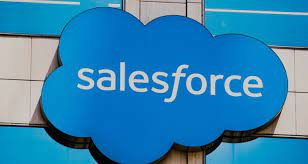If you run a business in Seattle and want to get the most out of Salesforce, teaming up with a local consultant can make all the difference. Companies lean on Salesforce for just about everything — sales, marketing, customer service — but making it work smoothly isn’t always simple. There are plenty of bumps in the road, but with the right strategies, you can dodge the worst of them.
Let’s break down some of the headaches folks run into when rolling out Salesforce, and what actually works to fix them.
Data Migration Headaches
Moving data from old systems is messy. Bad data, weird formats, missing info — all of it can throw a wrench into your Salesforce setup. The fix? Work with an experienced Salesforce consultant in Seattle who knows how to scrub, map, and transfer your data the right way.
Getting People to Actually Use It
You can spend a fortune on Salesforce, but if your team ignores it, you’re wasting your money. People don’t always love change, especially if they don’t see what’s in it for them. Here’s what helps: run hands-on training, keep dashboards simple, and involve your team from the start. If people feel heard, they’re way more likely to get on board.
Too Much Customization
A common trap — piling on endless features and tweaks. Before you know it, the system crawls and becomes a nightmare to maintain. The trick is to stick to what matters most for your business. Keep things simple and let your consultant guide you on what’s truly essential.
System Integration Hassles
Salesforce doesn’t live in a vacuum. You need it to play nice with your other tools — ERP, marketing platforms, finance software. Integration can get tricky, but Salesforce APIs and third-party connectors help a lot. Test everything early so you’re not chasing down problems later.
Scope Creep
Projects have a bad habit of growing bigger than you planned. Suddenly, you’re behind schedule and over budget. Nail down your goals, set realistic deadlines, and keep everyone talking so things don’t spiral out of control.
How to Nail Your Salesforce Implementation
- Start with clear, measurable goals.
- Bring in people from every team so everyone’s on the same page.
- Use an agile approach — roll things out in stages instead of all at once.
- Keep an eye on your key metrics and tweak as you go.
- And honestly, having a certified Salesforce consultant in Seattle makes everything smoother.
FAQs
1.Why bother hiring a Salesforce consultant in Seattle?
Because they know how to plan, launch, and fine-tune Salesforce so it actually helps your business, not slow it down.
2.How long does it take to get Salesforce up and running?
It depends on how big and complex your business is, but most companies wrap things up in 3 to 6 months.
3.Can Salesforce connect with my other business tools?
Absolutely. It works with ERP systems, marketing software, finance tools — you name it. Everything ties together for a more unified setup.
4.How do I get my team to use Salesforce?
Give them proper training, let them have a say in the process, and build dashboards that make sense for their daily work. That’s how you get real buy-in.




